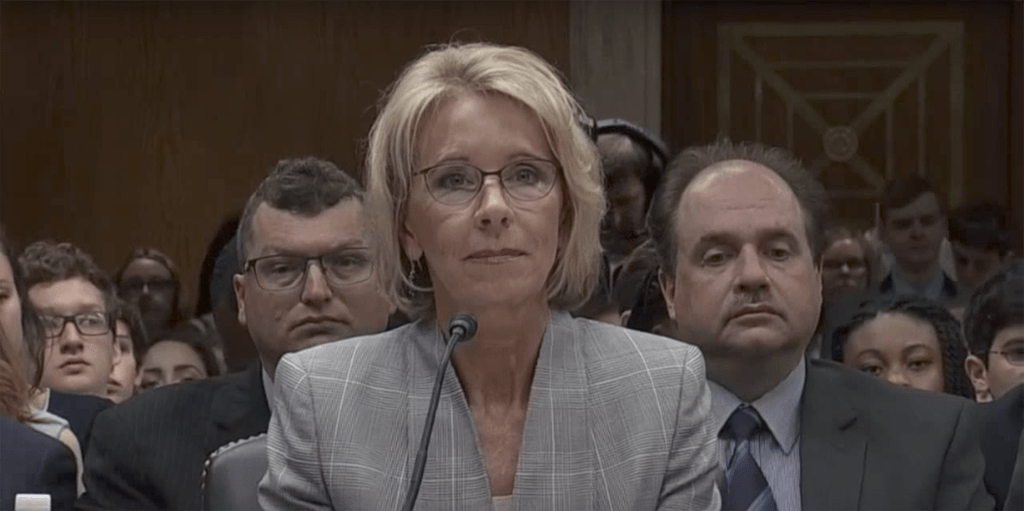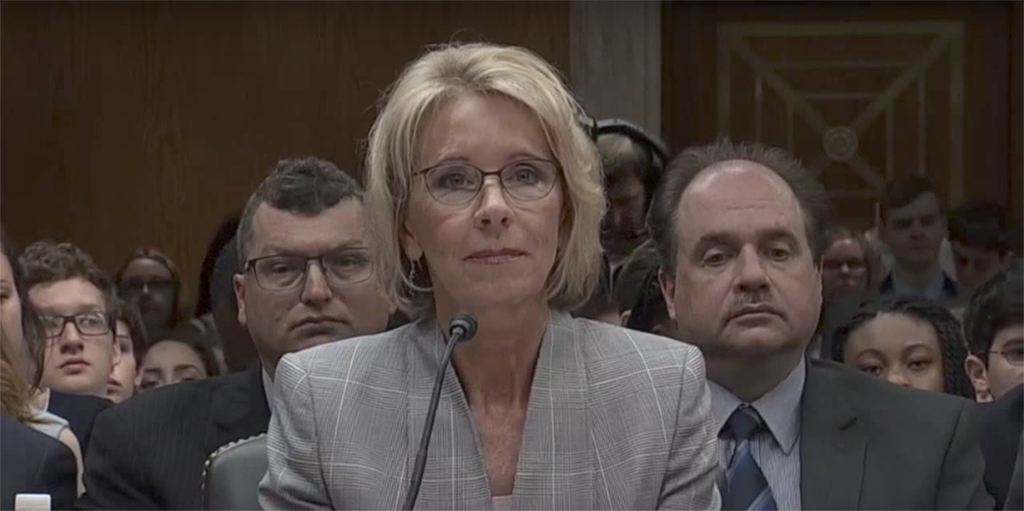Grading President Trump’s education budget
This week, Education Secretary Betsy DeVos testified before a Senate subcommittee on President Trump’s fiscal year 2018 budget proposal for the U.S. Department of Education. Sadly, this budget receives an “F” as it slashes critical funding for public education and raises serious questions about the administration’s commitment to protect the civil rights of Latino and other historically underserved students.
At a time when schools, teachers, and low-income kids across the nation need greater support and resources to close achievement gaps, this budget cuts federal education spending by $9.2 billion or 13 percent. This includes a cut of approximately $4 billion from investments in public school programs authorized by Congress through the bipartisan Every Student Succeeds Act (ESSA).
Ranking Member Senator Patty Murray (D-Wash) noted the impact the proposed budget would have on ESSA, saying “You not only cut the legs out from the bipartisan ESSA law with these massive cuts, you also propose programs similar to one that Congress already debated and rejected.”
America’s schools are now majority minority schools and Latino students are the largest and fastest growing racial and ethnic minority in U.S. public schools. In fact, one in four children (approximately 12 million students) in U.S. public schools are Latino. Additionally, nearly 10 percent of students in the United States—4.9 million children—are English learners (EL).

That’s why funding ESSA is critical to the success of this nation. ESSA takes important steps to improve the achievement of Latino and EL students by holding them to challenging academic standards, measuring and reporting academic progress, partnering with parents, taking specific actions when students are failing academically, and for the first time ever, requiring that ELs are a meaningful part of the state’s accountability system.
In addition to cutting funding to ESSA, the budget also provides “level funding”—Washington speak for cuts—for the Department of Education’s Office for Civil Rights (OCR). Level funding will result in significant staffing cuts to OCR despite a record number of student complaints filed in fiscal year 2016, with nearly 15 percent of those complaints being related to race and/or ethnicity.

During Secretary DeVos’ testimony, she had several opportunities to declare—without any ambiguity—that discrimination would not be allowed in America’s schools. Once again, she receives an “F” for failing to stand against discrimination and protect the rights of all students.
While the racial and ethnic makeup of America’s schools continues to change, one thing remains clear: every child deserves to right to learn in an environment that is free from discrimination. The Department of Education can lead the fight against discrimination by:
- Protecting every child, including every Latino child, from discrimination in all U.S. public schools and where all federal funds are spent.
- Addressing policies that discourage school attendance by undocumented students, or kids living in mixed-status families.
- Investing in public education in a way that seeks to close the achievement gaps for Latino kids and other historically underserved groups.
Secretary DeVos and this administration have an obligation and responsibility to serve all kids well, and to commit to the protection and furtherance of students’ civil rights. Frankly, the proposed budget falls far short of meeting that obligation. The responsibility now falls on Congress to provide the appropriate federal oversight and remain committed to protecting all students.
Watch her full testimony below:


